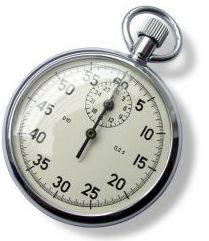One of the fastest ways to dramatically increase the number of sales you make, is to make sure you ‘close the sale’ at the right point in the negotiating process!
Why is timing so important to your sales success?
 In any sales situation, there is a certain point in time where the prospective client or customer is most likely to agree to buy from you. If you ask for the sale within this golden period, you stand a far greater chance of the prospective client saying “yes.”
In any sales situation, there is a certain point in time where the prospective client or customer is most likely to agree to buy from you. If you ask for the sale within this golden period, you stand a far greater chance of the prospective client saying “yes.”
Here’s why:
If you ask them to make a buying decision before they are ready, they will think you are either ‘pushy’ or desperate. This will massively reduce your chances of making the sale, because people hate to feel pushed or pressurised.
If you ask them to make a buying decision after their interest has dwindled, they will be far less motivated to buy from you. This will massively reduce your chances of making the sale, because without that all-important motivation to buy, there’s little reason for them to purchase. The moment will have passed.
Hot stuff!
A great way to remember the role of timing in the negotiating process, is to think about what you do when you boil some milk in a pan. You start off with the milk at room temperature. Then, once the pan of milk is placed on the hot stove, it slowly gets hotter and hotter until it starts to boil. Once you turn the heat off, the temperature slowly drops until it goes back to room temperature again.
In a negotiation process, you need to ask for a buying decision ‘when the milk is at boiling point!’ This is the point where the prospective client or customer is at their most motivated to buy.
How to improve your timing
No two people are the same. When some people are at their most motivated to buy, they will lean forward with their eyes wide open, nodding their head in agreement. Others will hardly change their physiology, but ask you lots of relevant questions, and some will do neither! Whilst anyone involved in face-to-face negotiating should study the basics of body language, you need to combine this with additional resources.
For example, try asking the last 10 people who didn’t buy from you, what it was that made them decide not to proceed and pay attention to anything that suggests your timing was off.
If you regularly hear people say that “it all happened so fast” or their head was spinning from all the details, this might suggest you need to slow down a little. If you regularly hear people say that they just “went off the idea” or they are going to “review it again next year,” this might suggest you need to speed up a little.
I have been in sales and marketing long enough to know that there are many, many reasons why people decide to use one provider over another provider. However, by paying close attention to this often-overlooked area of the negotiating process, you can significantly increase your sales conversion rate.